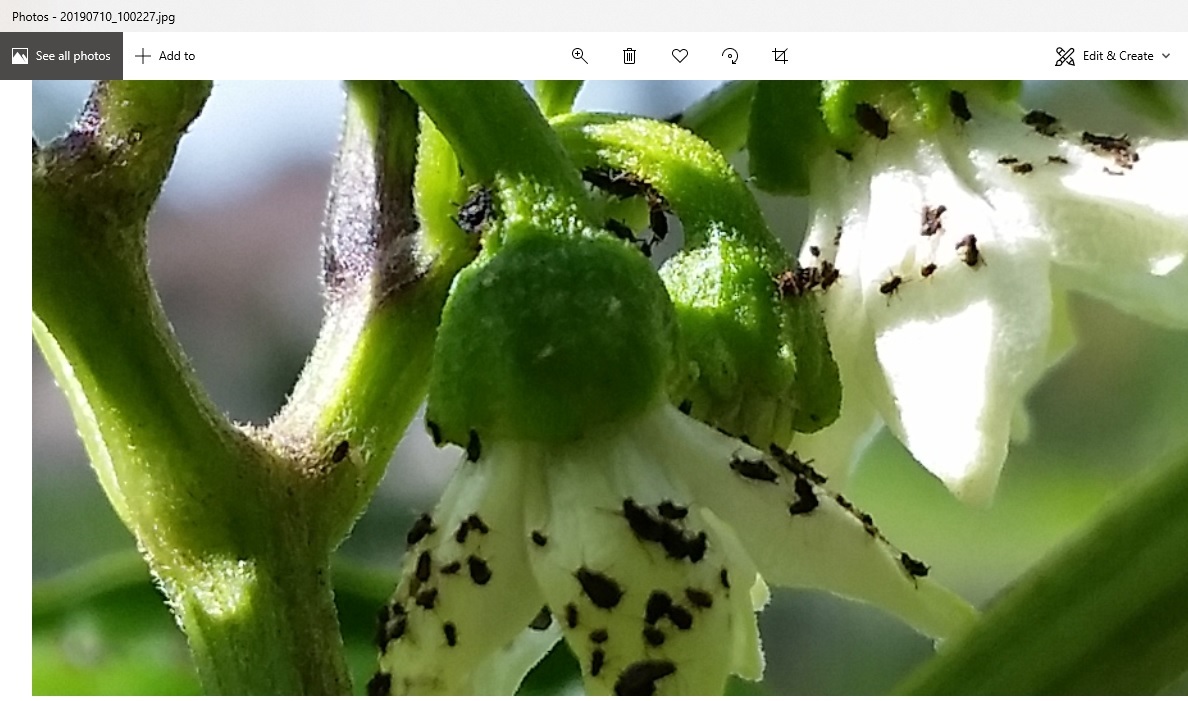Its my first year having a solid crack at growing peppers. Plants have been powering since germination in mid July.
About 3 weeks ago I noticed new growth was coming in deformed and thought (like all beginners) I had a cal deficiency.
After reading some posts from this site from others that have had the same issue, and them finding out that it was mites, made me spray for mites and order a ebay hand microscope to confirm if it was.
I couldnt find any neem locally here except for one called EcoNeem which had warnings not to use on fruit/veg, so I used an organic soap spray that I mixed at the weakest strength recommended for the first application.

It seemed to be going to work as it killed ants on contact. I also cut off all twisted new growth.
I re-applied the organic spray again 5 days after to kill any new arrivals or newly hatched.
So 2 weeks on and the new growth is still funky with some now curling right up and dieing.
Here is a pic of the worst plants....... wow they look even worse in the pic than real life.


My ebay microscope finally turned up and I have spent an hour going over the good leaves and the deformed looking for mites (not sure what they really look like) or eggs.
At first I found this, not sure what it is ? Couldnt see it with the naked eye.

Then when zooming in as tight as I could I found lots of dark marks/damage from little suckers?? maybe?? or maybe just normal??

And when still zoomed right in found this sitting on one of the dark marks.

I have around 50 peppers in containers all grouped together,
The Habaneros and Scotch Bonnets have shown NO signs of this, it is only affecting Jalapenos, Cayenne's and Thai birds eyes??
So , finally my question,
Am I looking at mites and their damage?
Could I assume the lack of finding much after an hour with the microscope that the spray is doing its job ?
Maybe I should go for a hard core prune back as the mite toxin is now in the ends of each branch?
Or should I just go to the pub for a beer?
About 3 weeks ago I noticed new growth was coming in deformed and thought (like all beginners) I had a cal deficiency.
After reading some posts from this site from others that have had the same issue, and them finding out that it was mites, made me spray for mites and order a ebay hand microscope to confirm if it was.
I couldnt find any neem locally here except for one called EcoNeem which had warnings not to use on fruit/veg, so I used an organic soap spray that I mixed at the weakest strength recommended for the first application.
It seemed to be going to work as it killed ants on contact. I also cut off all twisted new growth.
I re-applied the organic spray again 5 days after to kill any new arrivals or newly hatched.
So 2 weeks on and the new growth is still funky with some now curling right up and dieing.
Here is a pic of the worst plants....... wow they look even worse in the pic than real life.
My ebay microscope finally turned up and I have spent an hour going over the good leaves and the deformed looking for mites (not sure what they really look like) or eggs.
At first I found this, not sure what it is ? Couldnt see it with the naked eye.
Then when zooming in as tight as I could I found lots of dark marks/damage from little suckers?? maybe?? or maybe just normal??
And when still zoomed right in found this sitting on one of the dark marks.
I have around 50 peppers in containers all grouped together,
The Habaneros and Scotch Bonnets have shown NO signs of this, it is only affecting Jalapenos, Cayenne's and Thai birds eyes??
So , finally my question,
Am I looking at mites and their damage?
Could I assume the lack of finding much after an hour with the microscope that the spray is doing its job ?
Maybe I should go for a hard core prune back as the mite toxin is now in the ends of each branch?
Or should I just go to the pub for a beer?

